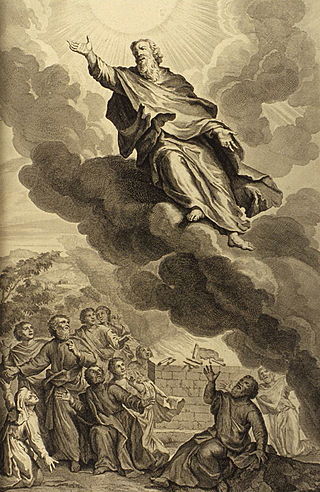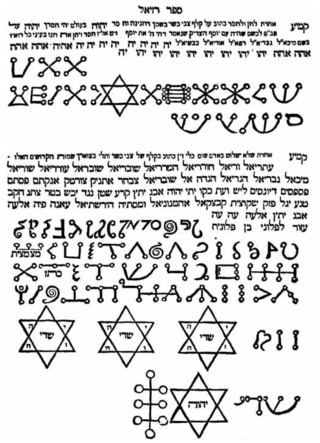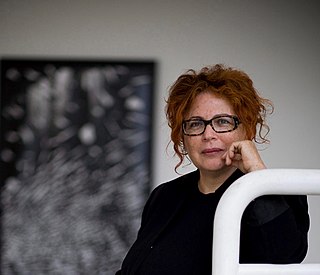
The Bible is a collection of religious texts or scriptures that are held to be sacred in Christianity, Judaism, Samaritanism, and many other religions. The Bible is an anthology – a compilation of texts of a variety of forms – originally written in Hebrew, Aramaic, and Koine Greek. These texts include instructions, stories, poetry, and prophecies, among other genres. The collection of materials that are accepted as part of the Bible by a particular religious tradition or community is called a biblical canon. Believers in the Bible generally consider it to be a product of divine inspiration, but the way they understand what that means and interpret the text can vary.

Hebrew is a Northwest Semitic language within the Afroasiatic language family. It was natively spoken by the Israelites and remained in regular use as a spoken language by their longest-surviving descendants, the Jews and Samaritans, before dying out after 200 CE. However, it was largely preserved as a liturgical language, featuring prominently in Judaism and Samaritanism. Having ceased to be a dead language in the 19th century, today's Hebrew serves as the only successful large-scale example of linguistic revival. It is the only non-extinct Canaanite language, and is also one of only two Northwest Semitic languages still spoken, with the other being Aramaic.

The Mishnah or the Mishna is the first major written collection of the Jewish oral traditions that are known as the Oral Torah. It is also the first major work of rabbinic literature. The Mishnah was redacted by Judah ha-Nasi probably in Beit Shearim or Sepphoris at the beginning of the 3rd century CE in a time when, according to the Talmud, the persecution of the Jews and the passage of time raised the possibility that the details of the oral traditions of the Pharisees from the Second Temple period would be forgotten. Most of the Mishnah is written in Mishnaic Hebrew, but some parts are in Aramaic.

The Talmud is the central text of Rabbinic Judaism and the primary source of Jewish religious law (halakha) and Jewish theology. Until the advent of modernity, in nearly all Jewish communities, the Talmud was the centerpiece of Jewish cultural life and was foundational to "all Jewish thought and aspirations", serving also as "the guide for the daily life" of Jews.

The Tosefta is a compilation of the Jewish oral law from the late 2nd century, the period of the Mishnah.

The Gemara is the component of the Talmud comprising rabbinical analysis of and commentary on the Mishnah written in 63 books. At first, Gemara was only transmitted orally and was forbidden to be written down, however after the Mishnah was published by Judah the Prince, the work was studied exhaustively by generation after generation of rabbis in Babylonia and the Land of Israel. Their discussions were written down in a series of books that became the Gemara, which when combined with the Mishnah constituted the Talmud.

Saʻadiah ben Yosef Gaon was a prominent rabbi, gaon, Jewish philosopher, and exegete who was active in the Abbasid Caliphate.

Enoch is a biblical figure and patriarch prior to Noah's flood, and the son of Jared and father of Methuselah. He was of the Antediluvian period in the Hebrew Bible.

The Nephilim are mysterious beings or people in the Hebrew Bible who are described as being large and strong. The word Nephilim is loosely translated as giants in most translations of the Hebrew Bible, but left untranslated in others. Some Jewish explanations interpret them as hybrid sons of fallen angels (demigods).

Jacob Fichman also transliterated as Yakov Fichman, was an acclaimed Hebrew poet, essayist and literary critic.

Sefer Raziel HaMalakh is a grimoire of Practical Kabbalah from the Middle Ages written primarily in Hebrew and Aramaic. Liber Razielis Archangeli, its 13th-century Latin translation produced under Alfonso X of Castile, survives.

Maya Cohen Levy, also known as Maya Cohen-Levy, is an Israeli painter and sculptor.

Meir Pichhadze was an Israeli artist and painter.
Doron Solomons is an Israeli video artist.
Jesse Kalisher was an American art photographer.
Henry Wartenberg was a merchant and civic leader in Los Angeles, California, during the 19th century. He was the first president of the city's first volunteer fire department, in 1868–69, and a member of the Los Angeles Common Council, the governing body of the city, from 1868 to 1870.
Nightmare on the 13th Floor is a 1990 American made-for-television thriller film which was originally shown on the USA Network on Halloween 1990. It stars Michele Greene as the travel writer Elaine Kalisher, James Brolin as Dr. Alan Lanier and Louise Fletcher as Letti Gordon.

Nat(h)an Friedland was a rabbi and member of the H'bat Tsion movement, one of the fathers of the movement for settling the Land of Israel. He grew up in Taurig, Lithuania in the early decades of the 19th century and died in Jerusalem in 1883. He became one of the most prolific Zionist writers of the H'bat Tsion movement in the mid-1800s. He was one of several writers and thinkers of the 19th century created the intellectual basis for a new Jewish state. Friedland's collected writings, including his most popular work, "Der Cos", were translated from the Yiddish to modern Hebrew. All these publications are in Hebrew except the Jewish Encyclopedia article which is in English.

Michael Sgan-Cohen was an Israeli artist, art historian, curator and critic. His oeuvre touches different realms of the Israeli experience and the Hebrew language, displaying a strong connection to the Jewish Scriptures. His works were nurtured by his extensive knowledge of Art history, philosophy, Biblical Texts, Jewish thought and Mysticism, which in turn illuminated all these pursuits. His engagement with Judaism and the Bible as a secular scholar and his vast knowledge of modern and contemporary art contributed to the development of a distinctive approach which combined Jewish and Israeli symbols and images to create a multilayered and contemporary artistic language.
Simpson Kalisher is an American photojournalist and street photographer.











